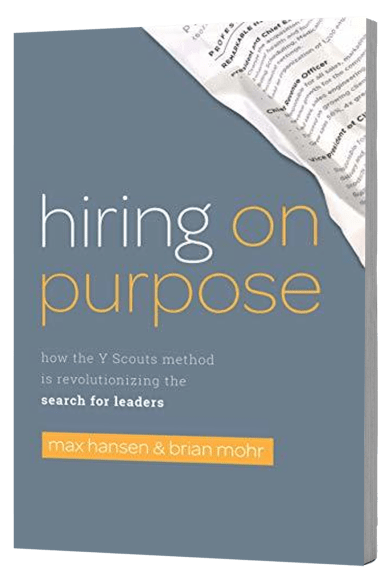The C-suite team consists of an organization’s top senior executives such as the chief executive officer, chief information officer, chief information security officer, chief technology officer, chief people officer, etc. Executives in the C-suite are the leaders in an organization and ensure that a company follows its projected plan and growth.
Although each executive in the C-suite serves a unique purpose, the CEO and COO are two of the most senior executives responsible for achieving the company’s mission and objectives. Both the COO and CEO are needed, especially within larger organizations, to lead the company’s growth. Read on to find out the differences between a CEO and COO and why you need both to create an optimal C-suite team.
Differences Between a CEO and COO
The chief executive officer (CEO) and the chief operating officer (COO) are the top senior executives within an organization. The two roles have unique responsibilities but often complement each other. When their leadership and personality traits balance out, it can create an optimal C-suite environment.
As the most senior executive of a company, the CEO is responsible for being the face of and leading the organization. The CEO usually has the final say in company decisions and policymaking and must respond to the board of directors. Once a company becomes too large, the COO acts as the right hand to the CEO.
What Are the CEO’s Responsibilities?
The CEO must create strategies and be able to execute them. In addition, a CEO must be able to make decisions that will minimize risk to a company and its team members. A strong CEO can come from any career background but must have the leadership, decision-making and problem-solving skills needed in this role.
A CEO’s primary responsibilities include:
- Creating and executing a company’s vision and missions, including measurable short-term and long-term strategic goals.
- Communicating with the public, government entities and shareholders on behalf of the company and its employees.
- Evaluating the work of other executive leaders, including that of the vice president, presidents and directors.
- Assessing the company’s risk.
What Leadership Traits Does a CEO Need?
Strong leadership skills are required for a CEO to lead an entire company. Although not all CEOs have the same leadership style, certain leadership traits are more effective than others in this role.
The most effective leadership abilities of a CEO include:
- Forming and executing objectives.
- Communicating clearly with a broad audience.
- Making risk-averse decisions.
- Inspiring team members.
- Influencing managers and employees.
- Inspiring trust within the organization.
As the leading executive in a company, all interested parties look to the CEO — from the shareholders, directors and managers to regular employees — making it integral to have the right intellectual and emotional qualities that will instill their trust.
What Are the COO’s Responsibilities?
Once an organization becomes too large, it can be difficult for one person to ensure that the company is on the right track, which opens the COO role. The COO acts as the top advisor to the CEO and oversees the operations and different functions of a company.
A COO’s primary responsibilities include:
- Assisting the CEO by leading staff and senior executives in line with the company’s vision, mission and goals.
- Working with the CFO to align the company’s financial goals.
- Providing reports on a company’s operational conditions.
- Working with C-level executives on operations, budgeting and resource allocation.
- Working with the senior management team to create and implement operational strategies that will help a company maximize profit and efficiency.
- Working with the CEO to raise capital.
- Holding employees and senior managers accountable to the company’s mission, policies and objectives.
What Leadership Traits Does a COO Need?
As the CEO’s partner, the COO should also be a powerful leader and correctly oversee the operational functions of a business. COOs do not require a specific background but must have the experience necessary to know how a company operates and fix any major types of problems that come with running a business.
The most effective leadership abilities of a COO include:
- Identifying key problems.
- Leading corporate strategies and planning efforts.
- Connecting the organization to a similar goal and mission.
- Leading and managing the work of other managers.
- Being detail oriented.
COOs must be able to gain the trust of and influence other leaders, including fellow members of the C-suite, since a COO’s effectiveness will depend on this support.
How To Create an Optimal Environment for the CEO and COO
The CEO and COO’s ability to work well together is critical for the success of any business. The COO will act as a CEO’s trusted advisor, mentor, coach and executor, making a well-balanced partnership crucial in creating an optimal environment for the C-suite and the entire organization.
Companies that expect to scale will need to be even more selective and strategic in appointing their CEO and COO. These are the two roles that hold the most responsibility within an organization. If your organization is looking for a CEO, COO or both, it is important to lean on a retained search firm that can help you hire on purpose. Reach out to Y Scouts today to learn more!
Frequently Asked Questions
Q: How does the CEO vs COO differ?
A: The CEO and COO have distinct roles, even though they work closely together. The Chief Executive Officer is like the captain of the ship, setting the overall direction and strategy for the company. They handle big-picture goals, vision, and often represent the company to the outside world. The Chief Operating Officer, on the other hand, is more like the first mate, focusing on the day-to-day operations. They ensure that daily activities run smoothly and that the strategy set by the CEO is put into action. In short, the CEO drives the vision, while the COO keeps everything running smoothly.
Q: What is the salary of CEO vs. COO?
A: The salary for a CEO is usually higher than that of a COO. CEOs often earn more because they set the company’s overall direction and strategy, and their compensation includes a higher base salary, bonuses, and stock options. COOs, who handle daily operations and implement the CEO’s strategy, typically earn a bit less, though their salary is still quite substantial.
Q: Can someone be both CEO and COO?
A: Yes, someone can be both CEO and COO, particularly in smaller companies or startups. In these cases, a single person might handle both the overall strategy and daily operations. Not all companies with CEOs have a separate COO; for example, CEOs in small businesses often take on the COO’s responsibilities to manage the business more closely as it grows. In larger organizations, though, the roles are usually separated to give each area the attention it needs.





